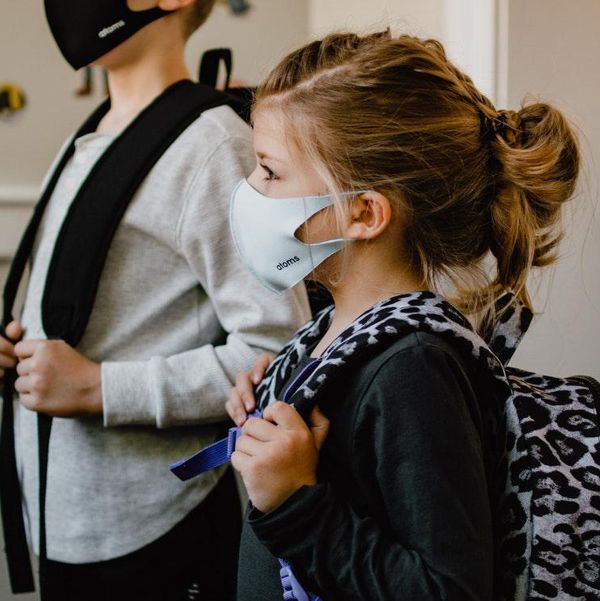
PITTSBURGH—Many Pennsylvania school districts have detected lead and other contaminants in their drinking water and documented problems with mold and radon in school buildings—but not all of them removed the hazards, according to a new report.
The report, published this month by the Pittsburgh-based health advocacy nonprofit Women for a Healthy Environment, looked at testing and cleanup practices for environmental health hazards including lead and other contaminants in drinking water; lead in paint and dust; radon; and mold in a randomized sample of 65 public school districts serving about 175,000 students across the state.
That’s a small sample size—Pennsylvania’s K-12 education system has about 500 school districts, so it represents about 10% of total school districts—but among the schools sampled, the report found that testing and cleanup procedures for environmental hazards are not performed consistently or uniformly as the state still lacks legal requirements.
Related: How joining a climate program could save Western Pennsylvania kids’ lives and lungs
For example, 89% of the 65 school districts tested drinking water for lead in the last 10 years. Of those, 91% found lead contamination, but only 9% of schools that detected lead took action to remove it. Only 9% of schools had tested for lead in dust or paint, which are the most common sources of lead exposure in children. Of those, 33% found lead contamination in dust or paint—but none took steps to remove it. The report doesn’t indicate why schools failed to remediate these toxics, but lack of funds and resources are likely to blame.
Lead exposure in children damages the brain and nervous system, slows growth and development, and can lower IQ and cause learning, behavior, hearing, and speech problems. No level of lead exposure is safe for children.

“This report shows that many children in Pennsylvania are exposed to significant environmental hazards in their school buildings,” Dr. Deborah Gentile, a pediatric asthma and immunology specialist who was not involved with the study, said in a statement. “It is unacceptable that all school buildings are not screening for and remediating these environmental hazards.”
The report does not provide information about testing and cleanup procedures at specific school districts, but it documents troubling patterns:
- Only 20% of schools tested for radon, the leading cause of lung cancer among non-smokers. Of the schools that tested, 33% found hazards. Among those that found hazards, only 40% of those took action to reduce radon exposure.
- Just under half of the schools tested drinking water for non-lead contaminants. 23% of those that tested reported issues, but only 14% of those that reported issues took steps to remove contaminants.
- 72% of public school districts tested for mold. Of those, 78% reported mold in their buildings. Among the schools that found mold, 86% took action to remove it.
- Only 20% of schools have policies in place aimed at ensuring healthy air quality for students.
- 72% of schools contract with a pesticide company to apply chemical pesticides to school grounds. Exposure to pesticides has been shown to impact children’s neurological and behavioral development.
- Overall, school districts serving a greater percentage of low income and special education students were less likely to test for environmental hazards. When they did test, they were less likely to remove hazards.
The report notes that Pennsylvania schools are vulnerable to health hazards because the average school building in the state was built in 1964, prior to the passage of the 1976 Toxic Substances Control Act and the 1987 Lead in Paint Rule, two federal laws that reduced toxic substances used in the construction of school buildings.
The report also analyzed results by region. The analyses for southwest Pennsylvania showed similarly troubling patterns:
- In 2019, 24% of school districts in southwestern Pennsylvania conducted radon testing. In 38% of the school districts that tested, radon results were above recommended thresholds.
- In 2019, 96% of districts in southwestern Pennsylvania reported lead in drinking water testing, but only 67% tested water in every school building. Of the schools that tested, 71% reported lead contamination.
- In 2019, 78% of districts in southwestern Pennsylvania tested for mold in at least one building. Remediation was recommended in 77% of the 59 districts tested. Of those, 52 completed remediation while seven did not have documentation of remediation.
- In 2019, only 8.3% of schools in southwestern Pennsylvania had policies in place aimed at ensuring healthy air quality for students.
The report lays out a series of recommendations aimed at making schools across the Commonwealth safer, including: creating a public statewide database for environmental health data; giving schools access to additional state and federal funds for construction and renovation; implementing safe siting laws to keep schools away from polluting facilities; and creating evidence-based policies aimed at protecting children from environmental hazards at school; among others.
“Schools should be a safe place for children to learn, grow and play,” Michelle Naccarati-Chapkis, executive director of Women for a Healthy Environment, said in a statement. “Healthy learning environments lead to greater academic achievement.”
Banner photo credit: Kelly Sikkema/flickr




